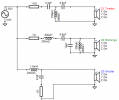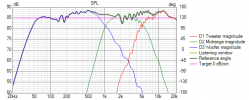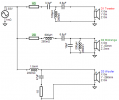Welcome to ASR!Don't worry, I will post soon the frequency response graphs with the stock crossover, the frd and zma files of the speaker and a new crossover design
Look forward to seeing your measurements.
Welcome to ASR!Don't worry, I will post soon the frequency response graphs with the stock crossover, the frd and zma files of the speaker and a new crossover design














finally the measurements are completed.Welcome to ASR!
Look forward to seeing your measurements.
One of the most enjoyable aspects of kit speakers is the pride one gains in building it yourself. I grew up in a different generation when building model airplanes was a big deal. With the current need for instant gratification fewer seem interested in the patience required for DIY.HiVi-Swan's U.S. Importer has just listed on Amazon an interesting 6.5" passive two way FINISHED speaker the D3.1 MKII that appears to be an update of the no longer sold DIY 2.2. Or perhaps, an update of the Swans D2.1SE finished speaker on which the DIY 2.2 seems to have been based. Woofer and Tweeter appear quite similar, to the 2.2, the weight is close to the same, the D3.1 MKII is an inch or so taller and deeper. At $550 a pair it is twice the price of the DIY 2.2, but the D2.1SE sold for $1000 in 2008, so perhapView attachment 458245s a bargain. Pretty I think. perhaps it is a deal.
I totally agree. But DIY speakers are in any case an oddity.One of the most enjoyable aspects of kit speakers is the pride one gains in building it yourself....